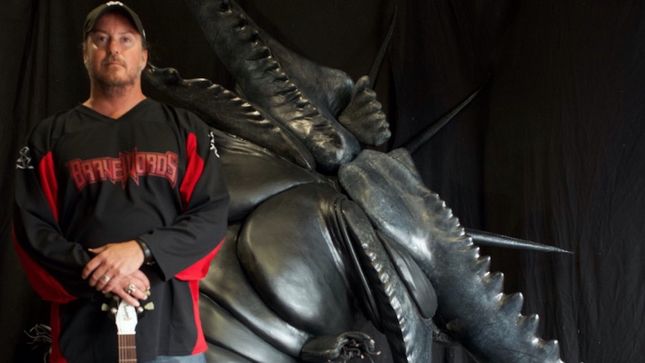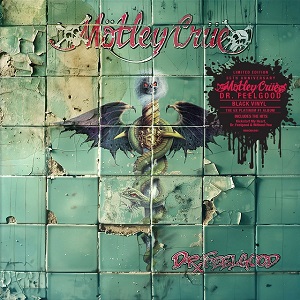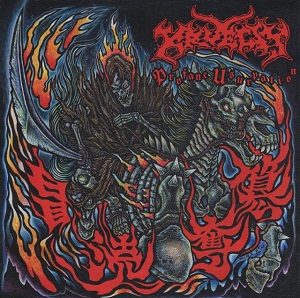CANNIBAL CORPSE Legend Named In Honour Of New Fossil Species
May 27, 2018, 6 years ago

A hellish monstrosity of an animal – like a beastly entity taken straight out of your worst nightmare – has come to sculptural life. And it has death metal, primordial life and Alex Webster written all over it!
Last year a new gigantic fossil worm, Websteroprion armstrongi, was unveiled (Eriksson, M.E., Parry, L. & Rudkin, D.M. 2017). Earth’s oldest ‘Bobbit worm’ – gigantism in a Devonian eunicidan polychaete. Scientific Reports 7, 43061; doi:10.1038/srep43061). The creature is an ancestor to the now-living, marine Bobbit worms - ambush predators that hunt in stealth mode for octopuses and fish. The fossil species was discovered in 400 million year old rocks from the Devonian Period in Canada and was named in honour of mighty bass giant Alex Webster of Cannibal Corpse, Blotted Science and Conquering Dystopia. Now this primordial animal has come to “life” by the skilled hands of prehistoric sculpture artist extraordinaire Esben Horn, at his company 10 Tons Aps in Copenhagen, Denmark, and assisted by Swedish Professor Mats E. Eriksson, lead author of the scientific study presenting the species.

Websteroprion armstrongi possessed the largest jaws recorded from the entire fossil record, reaching over one centimetre in length while usually being in the mm-size range. Investigation of the relationship between body and jaw size suggested that this animal achieved a total body length in excess of a metre, which is comparable to that of modern ‘giant eunicid’ worm species. Whilst this is certainly impressive, why settle with big when you can go mega? Hence, the sculptural reconstruction of the animal measures almost three meters in its majestic height and shows the anterior (head) portion of the beast as if it was emerging from the sea floor, jaws spread wide apart and awaiting a passing prey to be dragged down below and devoured. The final result almost brings to mind something from the cult flick Tremors (1990), which happens to be a favourite film of Horn.
The jaws of the giant sculpture were modelled after the actual fossils and sculptured out of polyurethane foam, covered by a layer of glass fibre-reinforced acrylic gypsum. The outermost layer was modelled in “Rasmonite” (an acrylic gypsum gooey substance modified by Rasmus Frederiksen of 10 Tons), which turns rock-solid upon hardening, and finally painted. The worm body of the “Cannibal animal” was modelled after those of now-living relatives and carved out of Styrofoam and onto which a tight, black leather dress was tightly fitted. In addition to giving the sculpture a unique and cool look, it certainly adds to the metal connotation of the species name and to metal aesthetics in general. It strikes you as a sharp-dressed, evil queen worm ready for a night out of serious prey ambushing.

The new worm monstrosity will be new a centrepiece at the hugely successful travelling exhibition Rock Fossils. The exhibition, which is organized by an international group of scientists and artists, Jesper Milán, Esben Horn, Rune Fjord, Achim G. Reisdorf and Mats E. Eriksson, portrays fossils named after rock stars and tells the stories behind the discoveries, rock stars, scientists involved, and of course the primordial organisms. The Websteroprion sculpture will be unveiled to the public for the first time when the exhibition re-opens June 7 in Luxembourg.
When looking at Horn’s big ass, bad ass Websteroprion armstrongi sculpture one could easily imagine several scenarios that fit classic Cannibal Corpse tunes, like “Devoured By Vermin”, “Worm Infested”, “The Wretched Spawn” and “Bloodthirst”. While we are at it, why not also throw in Obituary’s “Chopped In Half”! The match between the animal and death metal aesthetics is certainly one made in heaven…or rather perhaps hell.












